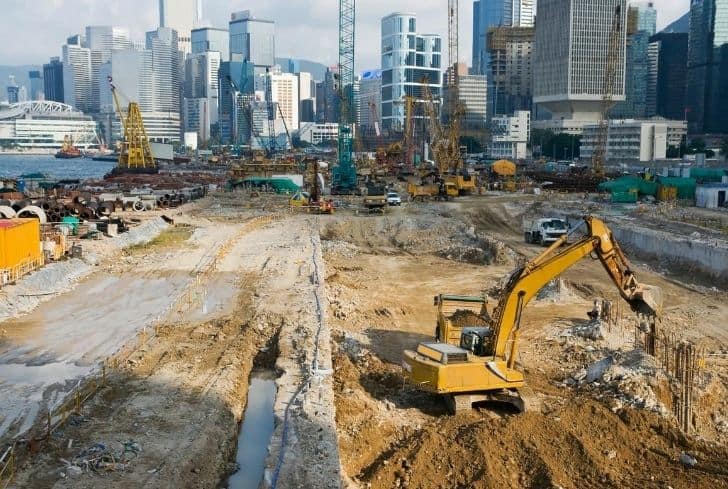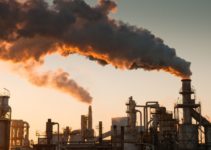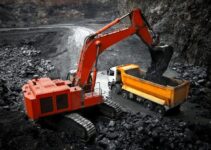Construction of new buildings is an ongoing process in cities and suburbs. While infrastructure building is an essential step to support the growing population and modernization, it brings forward various inconveniences, mainly those related to pollution.
Living near the construction site is hazardous to health, as it transmits various contaminants that cause permanent illness. However, the concept of green construction has brought forward a revolutionary change, resulting in decreased pollution and, of course, a healthier environment.
What are the Various Construction Site Contaminants?
When any construction occurs, various contaminants are produced from the sites, which cause different types of pollution. Hence if you are living in a home close to a construction site, there might arise various types of pollution and pollutants.
Contaminants From Air Pollution
The contaminants spread by air can travel large distances. The contaminants highly found in the wind are – PM10 (matters that are lesser than 10 microns in diameter), PAH’s bound to particulate matter, asbestos, VOCs (volatile organic compounds), carbon dioxide, carbon monoxide, hydrocarbons and nitrogen oxides.
Construction sites are responsible for the emission of PM 2.5 and PM 10, which accounts for about 14.5 % and 8% in the air, respectively. The majority of these come from the construction machinery and generators that run on diesel, and almost 1% coming from the dust from demolition sites.
Both flora and fauna suffer survival tasks as these cause biodiversity and disruption of the food chain.
Contaminants From Water Pollution
The runoff from construction sites results in the contamination of water bodies. The various agents polluting water are paints, glues, VOCs, oil, cement and other toxic chemicals. Once the underwater becomes contaminated, it might well affect the quality of property or indoor air. Severe environmental problems are caused by water pollution. Chemical pollutants like arsenic and mercury produce serious health issues, including lethal cancer.
Contaminants From Soil Pollution
The soil can contain pollutants from the remains of construction sites like the sand, cement and other chemicals that will hamper the fertility factor. No more crops will grow in those soils, and the quality of harvest will never be like before.
Contaminants From Noise Pollution
The noise resulted out of the construction site might hamper your health in various ways as it can cause sleep disturbance, stress, high blood pressure, and even sometimes hearing loss. Noise pollution can also disturb the natural habitat of birds and animals.
What is the Impact of Construction on Our Environment?
The construction industry has resurgence the impact on the environment is detrimental. According to a study done by the UK Green Building Council, the construction sector uses more than 400 tons of material per year, which is also known as the extraction of raw materials. Construction contributes around 23 percent air pollution, 40 percent drinking water pollution, 50 percent of the climatic changes, and also 50 percent of the landfills to the environment.
The construction industry accounts for around 40 percent of the worldwide energy usage and emissions from buildings are expected to grow by 1.8 percent. The large quantities of carbon dioxide emissions are due to the usage of steel, concrete, aluminum and steel. 9.8 percent of carbon-dioxide is generated by the production of 76 million of finished concrete.
According to the EPA rules, there are certain discharges that are prohibited to protect the environment. The wastewater from the concrete is managed by appropriate control. The wastewater discharges from the release of oils, painting, curing compounds, and other construction materials are also harmful to the environment.
Besides, the discharge of fuels, oils and other pollutants used in vehicles, equipment operation and maintenance are causing serious land and water pollution.
The numerous sources of water pollution on the buildings are due to the usage of fossil fuels, solvents, paints, and toxic chemicals. Minor chemical spills can leach into the ground and affect the underground water, thereby harming the aquatic animals.
Some famous projects like the Dakota Access Pipeline are criticized for their long term environmental impact as they run through the country. The carriage of fossil fuel from one part of the country to another through the pipelines will destroy the wildlands, which were previously undisturbed.
Presently, green building projects are being designed, and the materials are synthetically produced, thereby reducing or eliminating the need to engage destructive and expensive mining purposes using fossil fuels.
The green materials are easier to recycle or usage in future projects, thereby leading to a cost-effective method that has a lesser environmental impact on all. The debris generated from construction is also streamlined by the usage of materials that are recycled efficiently.
What are the Various Risks of Living Near Construction Sites?
Airborne dust from the construction site can bring about a wide range of problems towards health and cause lung-related issues for the construction workers. When you live near a construction site, you are exposed to various unhealthy dust emissions that can trigger health hazards.
Construction sites generate ‘respirable silica,’ a type of dust which is essentially a type of quartz, or mineral released in the air. The typical dust from a construction site includes silica, concrete, wood dust and also sandstones. The online dust particles, along with softwood, can be released into the air. Wood particles are also manufactured from plywood and fiberboard, which remain suspended in the air during construction.
Dust comes from lower toxicity materials like limestone, gypsum, dolomite, and also marble. Dirt can get into the body, causing severe damages to respiratory and even liver function.
The probable health hazards faced by humans living near a construction site could be respiratory issues, chocking of lungs and even lung cancer. A person could be exposed to asthma and various types of allergies. The immediate effects could be coughing, shortness of breath and production of mucus.
Various types of airborne sickness travel through the buried disease-ridden spores. Microorganisms like bacteria, virus occur near construction sites and once inhaled that can spring in life, causing the host to deteriorate in health. Besides, the cumulative usage of asbestos and silica may cause silicosis, a condition that debilitates the lungs.
The various pollutants that arise from the use of paints and varnishes are toluene, benzene, ethylene, xylene, anthracene and many other compounds that hamper different human activities resulting in health-related dysfunctions.
Lead is the leading cause of health hazards like aggression, anemia, irritability, headaches, loss of concentration, memory loss, reduced sleep sensations and sleep disorders. Other manifested health issues associated with construction site pollution could be infertility, blood pressure, indigestion, renal dysfunction and joint pain.
How to Protect the Environment During Construction?
Here are some of the ways we can protect the environment during construction:
1. Minimizing Waste
The construction process produces a vast quantity of waste, and there’s no other way than to reduce that. The methods that should be followed are increasing the efficiency of operation, optimizing supplies and materials of construction, and choosing techniques that will reduce waste materials. Filtration of construction products should be maintained so that the wastewater does not pollute any other water body.
2. Industrial Recycling
Exploring recycling options should be explicitly aimed. Builders should follow the EPA’s Industrial Recycling Program, which focusses on recycling construction and the debris demolition. This process would save resources to a great extent.
3. Using Energy Efficiently
Builders should use tools, products and materials that are designed for being more environmentally friendly. The usage of eco-friendly products like inflatable bladder dam for operations and all dewatering applications can be useful and will help in controlling wastes.
4. Choosing Green Solutions
Builders should look for using products and materials that would be more environmentally friendly and designed specifically to meet the required purpose.
5. Protecting Ecological Resources
Any construction work is aimed to protect marine life and animals in a particular area. The government should monitor the process of regulations that are meant to protect the biodiversity of particular ecology. The end goal will be towards completing the project within the most efficient timeline, and of course, resorting to processes that have the least amount of environmental impact.
For any construction work, the ultimate goal should be towards saving the environment and protecting its treasured assets. Hydrological solutions are the industry leaders and work innovatively towards reducing various environmental impacts. Builders must explore solutions that have a minimum impact on the environment and the maximum energy saving capacity.
Resources:
https://www.oransi.com/page/dangers-exposure-construction-site-dust
https://esub.com/environmental-impacts-of-construction-projects/






